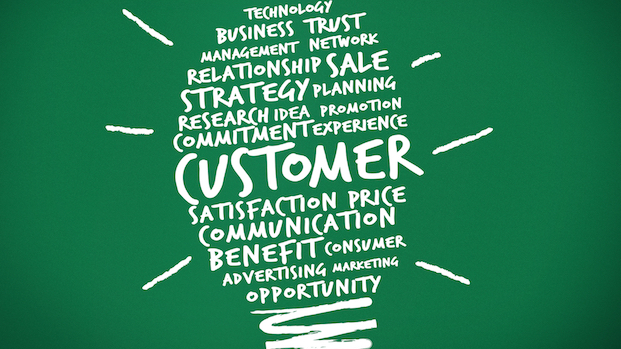April 2019

"The bait has to taste good to the fish, not the fisherman." "The customer is king". Or: "From now on, we will completely focus on the customer." What is self-evident for everyone who wants to sell something has developed from a platitude to a marketing trend in recent years. The key term here is customer centricity, i.e. the customer is the focus of all company activities. In the day-to-day marketing business, this initially means that it is no longer sufficient to simply distribute glossy advertising. Nor is it enough to rely on the success of traditional business models. Basically, customer centricity simply means the value chain begins with the customer. Good brands now develop their measures based on customer expectations. Those who want to remain competitive have to make customer centricity their mantra—both in their offering and in their marketing activities.
Why customer centricity?
Who doesn't want loyal customers who like to spend more money and place great trust in the company? But today's consumers are more selective and critical than ever. Digital technologies have turned consumers into informed customers. They can use their smartphones to search for new ideas and inspirations, exchange ideas with others and shop independent of place and time.
Competition for customers is also becoming increasingly fierce, as new large and small digital competitors turn up the heat. Take Amazon, for example. Instead of investing in sales or even advertising, the company invests in developing new business models. The online retailer has multiplied its market value in this way since it was founded and has developed into one of the most valuable companies in the world. Amazon has always kept an eye on the customers, known their needs sometimes even before they do, and more than satisfied them instead of resting on the status quo. Not only the digital giants, but also smaller (ex-)start-ups demonstrate what customer centricity can look like. Foodora, for example, delivers dishes ordered by app directly to your home from your favourite restaurant by environmentally friendly bicycle courier. This is all garnished with time and taste-based recommendations via push messages.
How does customer centricity actually work?
Since the Amazons and Zalandos of this world have been enmeshing their customers in targeted advertising or, better yet, personalised recommendations and high-quality service, the generic customer image has become obsolete. Today, brands have to know their customers intimately and fulfil their wishes. Nagging people indiscriminately with flashy display advertising is no longer fitting. Companies now have to nurture their customers with customized recommendations across all touchpoints and channels. Surprise them. They will thank you with loyalty.
Knowing and understanding customers
If you don't know someone, you can't make them happy. Companies therefore have to collect and evaluate all available information about their customers. The insights from social media, websites and online shops are worth their weight in gold if they are correctly evaluated. However, collecting data alone is not enough. Big data must be evaluated. And even large consumer goods manufacturers find this difficult. The customer journey also has to be analysed in detail and the knowledge gained has to be transformed into marketing measures. This, too, is often a major challenge.
Customer centricity is a whole culture
However, all this will not lead to the desired success if the most basic technology does not work. When sending a booking confirmation, for example, any typing errors customers make on their mobile phones should be reliably detected. Questions of corporate culture and organization are of central importance. Changing standards, values and behaviour patterns in such a way that they are geared toward customer satisfaction is difficult for many companies. A goal-oriented change process in the corporate culture or even in the organizational structure is often the only solution.
The path to customer centricity combined with more customer satisfaction, loyalty and trust is therefore not quite as easy as it might seem, as there is a lot of work to be done and a lot of information required. Important issues include comprehensive customer insights, detailed knowledge of the customer journey and ensuring the best service quality. You can read these and other tips in part 2 of the Customer Centricity blog series, which will be published shortly.
Tags
- Digital Marketing
- Digital Trends